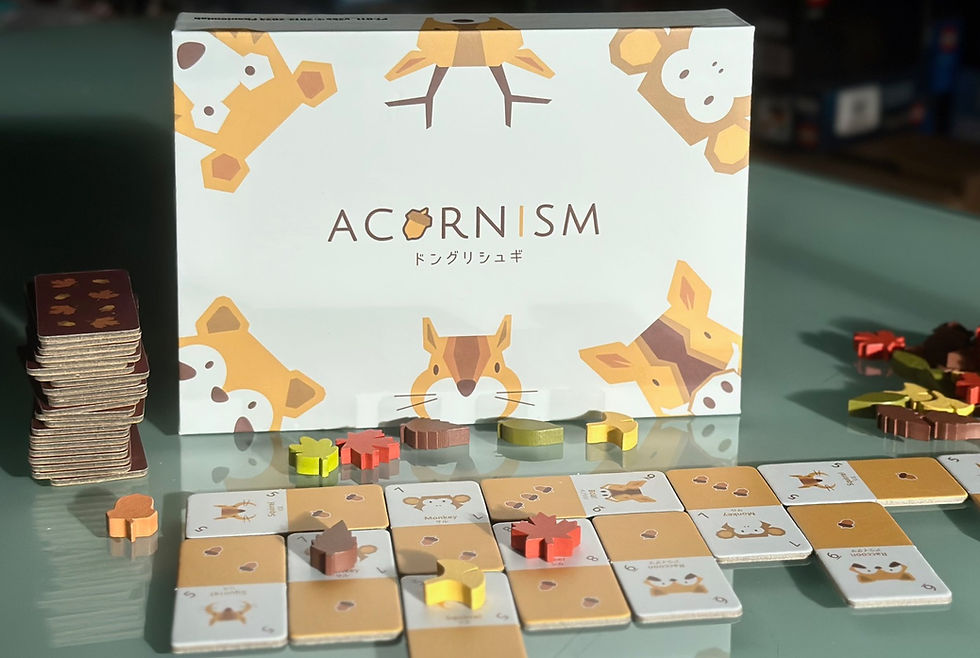Copenhagen
- Selwyn Ward

- Sep 27, 2019
- 3 min read
Updated: Oct 24, 2020
At Board's Eye View, we're always on the lookout for good gateway games that can be used to introduce 'non-gamers' to the joys of modern board games. For years, Alan R Moon's Ticket to Ride (Days of Wonder) has been one of those gateway games: it's a game that's been through multiple iterations and editions but in its most basic form, it's a simple set collection game where players exchange sets to complete rail routes.
What has this to do with Copenhagen? Well, this title from Queen Games is a similarly accessible, easily-learned gateway game. Instead of building railway routes, however, players in Copenhagen are collecting Tetris-like pieces of different shapes and sizes to place on their individual boards representing their colourful waterfront houses. They score 1 point for completing a row and 2 points for a completed column; and these points are doubled if the row or column is made up entirely of windows. The winner is the first player to 12 points or the player with the most points when the 'end of game' card is drawn (it's shuffled into the last 10 cards).

Play could hardly be simpler. On your turn you either take two adjacent cards from the seven that are always displayed or you exchange cards from your hand for a tile of the corresponding colour and size (eg: three green cards for a three-square green Tetris tile). Any time you lay a tile adjacent to one of the same colour, you benefit from a one-card 'discount', so, for example, adjoining an already laid red tile, you can claim a four-square red tile for just three red cards. Some spaces on your board display shields, and there's a shield at the end of some rows. When you cover a shield or complete a row marked with a shield, you earn a bonus action: you can take and immediately use a one-square window tile (great for filling gaps to help complete a row or column) or you can take a special action token that gives you a single-use special ability (for example, allowing you to take two non-adjacent cards from the display).
There's no direct player interaction but, as the game progresses, players will find themselves in competition for the last remaining tile of a particular shape (there's only a limited number of each shape and size of tile).
Designers Daniel Skjold Pedersen and Asger Harding Granerud have done a great job with Copenhagen. It's a light but very enjoyable game that you can expect to play in around 30 minutes (a filler length 20 minutes with just two players). Markus Erdt's art adds to the game's appeal, with more local Danish flavour added through the 'Little Mermaid' statue-shaped meeples used for keeping score. We haven't yet seen them (we'll show them off on Board's Eye View if and when we do) but there's also a deluxe edition with plastic rather than cardboard Tetris-like pieces and a Roll & Write edition, and 'Queenie' mini-expansions include multi-coloured tiles that are claimed using a matching mix of colour cards. These are all on Kickstarter right now. Click here to check them out and back the campaign.
Much as I love this game, I can't help but think that Queen Games have missed a trick in giving it the title Copenhagen and limiting it to the waterfront of a single city. Had they instead called the game Waterfront or Cityscape, with Copenhagen as the subtitle, it would leave it open for Queen to spawn other editions covering other iconic cities around Europe and the globe. Just as there's a ready market in gateway games, so there's ample scope for many more games that double as local souvenirs. On my travels, I'd much rather collect Waterfront: Amsterdam, Waterfront: Bergen and Waterfront: Chicago than the ghastly localised editions of Monopoly. It's not too late for Queen Games to pick up this idea and rebrand the game and the prospect of an atlas of successors. If they do, I hope they'll cut me in for a tiny share of the profits. :-)
(Review by Selwyn Ward)




